#NASA Cuts Short Test of Its Giant Rocket to the Moon
Text
Watch NASA’s Artemis Moon Rocket Roll Out to the Launchpad
https://sciencespies.com/news/watch-nasas-artemis-moon-rocket-roll-out-to-the-launchpad/
Watch NASA’s Artemis Moon Rocket Roll Out to the Launchpad

The giant Space Launch System is getting an early start ahead of its lunar journey, which is scheduled to start on Aug. 29.
NASA’s big moon rocket is rolling out to the launching pad for the third time — and it actually is slated to launch to the moon.
For once, NASA is ahead of schedule.
For the past month and a half, the Space Launch System rocket, which is the most powerful since the Saturn V that took astronauts to the moon in the 1960s and 1970s, has been parked in a building at the Kennedy Space Center in Florida. There, technicians have been getting the rocket ready for its maiden flight, which could occur in two weeks.
The rollout from the building to the launchpad had been scheduled for Thursday, but NASA announced on Monday that the move had been moved up to Tuesday evening. This all leads to the launch of NASA’s Artemis I mission, an uncrewed test of the giant rocket and the Orion spacecraft where astronauts will one day sit.
youtube
What happens during the rollout, and can I watch it?
It is about 4.2 miles from NASA’s huge Vehicle Assembly Building to the launchpad, which is known as Launch Complex 39B. NASA first used the pad during the Apollo program in the 1960s. The rocket and launch tower will sit on a gigantic vehicle that NASA calls a crawler-transporter. It is the same vehicle that carried the Saturn V for the moon landings, but it has been renovated and upgraded.
The crawler, indeed, crawls. Bigger in area than a baseball infield and able to carry up to 18 million pounds, it will move at a speed up to 1 mile per hour over a gravel path to the launch site. The trip will take about 10 hours.
The crawler and the rocket started moving around 10 p.m. Eastern time. The transport operation got underway about an hour late because of weather in the area including lightning.
NASA is broadcasting the rollout on Tuesday night through Wednesday morning on one of its YouTube channels. , and a feed with outside commentary is also being provided by NASASpaceflight, an independent online space news outlet. You can also watch it in the video player embedded above.
The Space Launch System rocket and Orion spacecraft being rolled to the launchpad on the mobile launcher at the Kennedy Space Center in March ahead of a dress rehearsal.Aubrey Gemignani/NASA
What happens next?
Technicians will be making final preparations, including hooking up power and propellant lines to the rocket and the launch tower. Although the rollout is sooner, the target time for the Artemis I launch has not changed: Monday, Aug. 29 at 8:33 a.m. Eastern time. You can subscribe here to get a reminder about the launch, as well as other space events, on your personal digital calendar.
What are the Space Launch System and Orion, and why are they important?
The Space Launch System and Orion are two of the core components of NASA’s plans to return astronauts to the surface of the moon in the coming years. Getting there requires a rocket powerful enough to push a large spacecraft out of low-Earth orbit to the moon, some 240,000 miles away. Orion is a capsule designed to carry astronauts on space voyages lasting up to a few weeks.
What problems occurred during the dress rehearsal?
NASA first rolled the S.L.S. rocket to the launchpad in mid-March. In early April, it attempted to conduct a “wet dress rehearsal” of countdown procedures, including the loading of more than 700,000 gallons of liquid hydrogen and liquid oxygen rocket propellants. However, technical glitches, including a hydrogen leak during three rehearsal tries, cut the countdowns short.
NASA then rolled the rocket back to the Vehicle Assembly Building to conduct repairs. In June, the rocket returned to the launchpad for another attempt at the wet dress rehearsal. That attempt, on June 20, encountered a different hydrogen leak, in a fuel line connector to the rocket’s booster stage. However, the propellant tanks were fully filled for the first time, and controllers were able to continue the rehearsal until the countdown terminated with 29 seconds left. Originally, the aim was to have the countdown stop with just under 10 seconds, when the engines would start for an actual launch.
Despite the leak, NASA officials decided that all of the critical systems had been sufficiently tested and declared the test a success. The rocket headed back for the Vehicle Assembly Building once again for final preparations, including the installation of the flight termination system, which would blow up the rocket in case something went wrong during launch and eliminate the possibility of crashing into a populated area.
The flight termination system’s batteries, installed on Aug. 11, are normally only rated to last for 20 days, but the part of the United States Space Force that oversees launches from Florida granted NASA a waiver that extends the period to 25 days. This allows the Aug. 29 launch date as well as backup opportunities on Sept. 2 and Sept. 5.
NASA hopes it fixed the hydrogen leak, but it will not know for sure until the Aug. 29 countdown, when the propellant line is cooled down to ultracold temperatures, something that cannot be tested in the Vehicle Assembly Building.
#News
0 notes
Photo

NASA test of mega Moon rocket engines cut short
NASA conducted a test firing of the engines for its giant Space Launch System (SLS) lunar rocket on Saturday but they shut down earlier than planned, the space agency said.
The "hot-fire" test at the Stennis Space Center in Mississippi was supposed to last a little over eight minutes—the time the engines would burn in flight—but they shut down just over a minute into the burn.
"Teams are assessing the data to determine what caused the early shutdown, and will determine a path forward," NASA said in a statement.
The SLS rocket is intended to launch the Artemis missions that will take US astronauts back to the Moon.
7 notes
·
View notes
Photo






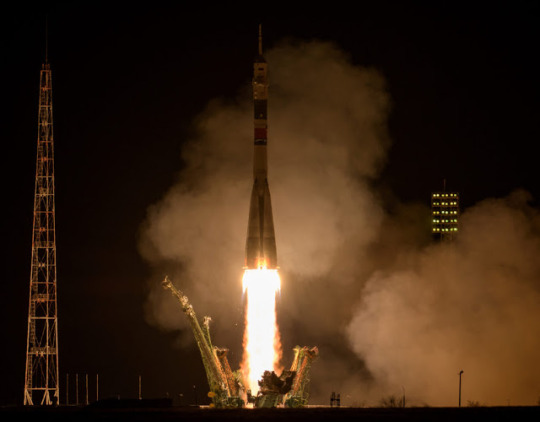
SpaceTime 20190320 Series 22 Episode 23 is now out SpaceTime covers the latest news in astronomy & space sciences. The show is available as a free twice weekly podcast through Apple Podcasts (itunes), Stitcher, Google Podcast, Pocketcasts, SoundCloud, Bitez.com, YouTube, Audio Boom, your favourite podcast download provider, and from www.spacetimewithstuartgary.com SpaceTime is also broadcast coast to coast across the United States on Science360 Radio by the National Science Foundation in Washington D.C. and around the world on Tune-In Radio. SpaceTime daily news blog: http://spacetimewithstuartgary.tumblr.com/ SpaceTime facebook: www.facebook.com/spacetimewithstuartgary SpaceTime Instagram @spacetimewithstuartgary SpaceTime twitter feed @stuartgary SpaceTime YouTube: https://www.youtube.com/c/SpaceTimewithStuartGary Today’s stories... New studies show the Milky Way is warped and twisted The first accurate three dimensional map of the Milky Way shows that the galaxy is warped and twisted. Asteroid Bennu spinning faster over time Astronomers have found that the asteroid Bennu is gradually spinning faster over time. Second giant impact crater found in Greenland Scientists have discovered a possible second impact crater buried under more than a kilometre and a half of ice in northwest Greenland. New crew blasts into orbit bound for the space station A Russian Soyuz rocket has blasted into orbit carrying the Expedition 59 crew bound for the International Space Station. The Science Report Modern coal-fired power stations found producing more ultrafine dust particles than road traffic. New study claims air pollution is now causing an estimated 8.8 million extra deaths globally each year. Daughters of moms who smoke during pregnancy likely to grow up short and develop obesity. Iran launching heavily armed drones in the skies above the highly strategic Strait of Hormuz. A new dinosaur species discovered in Australia. Civilian doctors will need to brush up on their knowledge of space medicine as space tourism takes off. Real Clear Science’s top ten biggest junk science stories of 2018 Last Saturday’s show…. Breaking up is hard to do – if you’re an asteroid The Hollywood notion of Bruce Willis rocketing into space to blow up a giant asteroid on a collision course with the Earth is unlikely to ever reach fruition – following new studies showing some asteroids may be a lot harder than previously thought. Magnetic Bubbles on the Moon Reveal Evidence of "Sunburn" New NASA research suggests that some of the colouration seen on the lunar surface could actually be a form of Sunburn. Antimatter gravity experiments move a step closer Does antimatter fall down or up – it’s a fairly simple question – but one for which there has not yet been a confirmed answer. First Soyuz launch for 2019 almost ends in failure Drama has surrounded the first Soyuz launch for 2019 -- with the mission carrying a new Egyptian surveillance satellite almost failing to reach its intended orbit. The Science Report CO2 emissions will soon match the last major greenhouse warming event. North Korea up grading its missile test facilities. How watching too much TV could be bad for your memory. People with diabetes are more likely to have back and neck pain. Computers are far more vulnerable to hacking through common plug-in devices than previously thought. Neanderthals walked upright just like their modern human cousins. Growing concerns about an increase in go fund me sites financing bogus cancer cures. SpaceTime Background SpaceTime is Australia’s most respected astronomy and space science news program. The show reports on the latest stories and discoveries making news in astronomy, astrophysics, cosmology, planetary science, galactic and stellar evolution, physics, spaceflight, and general science. SpaceTime features interviews with leading Australian scientists about their latest research. The show is broadcast coast to coast across the United States by the National Science Foundation on Science360 Radio and around the world on Tune in Radio. SpaceTime is available in Australia as a twice weekly podcast which averages around three million downloads annually. It’s hosted on line through Bitez.com on all major podcast platforms. SpaceTime began life in 1995 as ‘StarStuff’ on ABC NewsRadio. Stuart Gary created the show while he was NewsRadio’s Science Editor, evening presenter, and news anchor (a position he held for more than 17 years). Gary wrote, produced and hosted StarStuff, consistently achieving 9 percent of the Australian radio audience share - according to Neilsen ratings survey figures for the five major Australian metro markets (Sydney, Melbourne, Brisbane, Adelaide, & Perth). The StarStuff podcast was hosted by ABC Science on line achieving over 1.3 million downloads annually. Sadly, the popular program was axed in 2015 during ABC budget cuts. Rather than remain with the ABC, Gary resigned to continue producing the show independently and rebranding it as SpaceTime. The first episode of SpaceTime was broadcast on February 8th 2016 and the show has been in continuous production ever since. SpaceTime now reaches an audience almost three times greater that it achieved as StarStuff and continues to grow.
19 notes
·
View notes
Photo
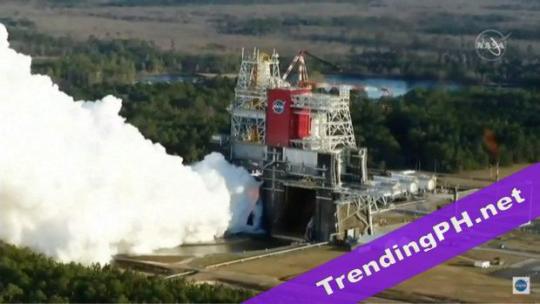
Nasa test of mega Moon rocket engines cut short WASHINGTON — Nasa conducted a test firing of the engines for its giant Space Launch System (SLS) lunar rocket on Saturday but they shut down earlier than planned, the space agency said. The “hot-fi... https://trendingph.net/nasa-test-of-mega-moon-rocket-engines-cut-short/?feed_id=81688&_unique_id=600474afb31f4 #cut #engines #mega #moon #nasa #philippinenews #philippinesnews #rocket #short #test #trendingph
0 notes
Text
After a decade, NASA’s big rocket fails its first real test - Ars Technica
After a decade, NASA’s big rocket fails its first real test – Ars Technica
After a decade, NASA’s big rocket fails its first real test Ars Technica
SLS: Nasa’s ‘megarocket’ engine test ends early BBC News
NASA cuts short ground test of its giant moon rocket Al Jazeera English
Space Launch System Hot Fire Test cut short WAAY-TV 31 News
NASA takes delivery of Orion Artemis I spacecraft New Atlas
View Full coverage on Google News
Emci-Hub Technologies Ltd
View On WordPress
0 notes
Text
Critical Test of NASA's Giant Moon Rocket Cut Short By 'Major Component Failure'
https://sciencespies.com/space/critical-test-of-nasas-giant-moon-rocket-cut-short-by-major-component-failure/
Critical Test of NASA's Giant Moon Rocket Cut Short By 'Major Component Failure'
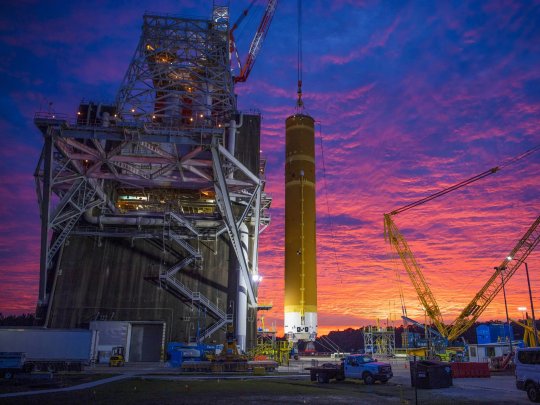
NASA’s mega-sized moon rocket encountered an engine issue during a critical test on Saturday, and the error could further delay the agency’s effort to send astronauts back to the moon.
The rocket, called Space Launch System (SLS), is designed to eventually stand 365 feet (111 meters) and ferry astronauts to the moon sometime in the mid- to late-2020s.
The system is an essential piece of a larger program called Artemis, a roughly $US30 billion effort to put boots back on the lunar surface for the first time since 1972. NASA has spent about US$18 billion developing the rocket.
The SLS core stage – the system’s largest piece and its structural backbone – was assembled and heavily strapped down at Stennis Space Centre in Bay St. Louis, Mississippi, on Saturday for a critical “hot fire” test.
For the first time, the rocket was ready to simultaneously fire its four powerful RS-25 engines as it would for launch.
The core stage is the world’s largest and most powerful rocket stage, according to NASA. It hosts five mains sections, including a 537,000-gallon (2 million-litre) tank for liquid hydrogen, a 196,000-gallon (742,000-litre) tank for liquid oxygen, four RS-25 engines, avionics computers, and other subsystems.
Boeing is the lead contractor for the stage, and Aerojet Rocketdyne is responsible for its RS-25 engines, which used to help propel NASA’s fleet of space shuttles.
The fuel tanks were filled with 733,000 gallons of cryogenically chilled propellant on Saturday, and the engines roared to life at about 5:27 pm EST.
“It was like an earthquake,” NASA Administrator Jim Bridenstine told reporters in a press conference after the test.
“It was a magnificent moment. And it just brought joy that after all this time, now we’ve got a rocket. The only rocket on the face of the planet capable of taking humans to the moon was firing all four RS-25 engines at the same time.”
The engines were supposed to fire continuously for eight minutes. But about one minute into the test, the engine controller sent a command to the core-stage controller to shut them down.

Crews at Stennis Space Centre lift the core stage into place on Jan 22. (NASA)
Controllers had seen a flash next to the thermal-protection blanket covering engine four. Shortly afterward, that engine registered an MCF, or “major component failure”. It’s not yet clear what happened.
“At the time that they made the call we did still have four good engines up and running at 109 percent,” John Honeycutt, the SLS program manager at NASA’s Marshall Space Flight Centre, said in the press conference.
The whole thing was captured on NASA’s live broadcast:
youtube
“The amount of progress that we’ve made here today is remarkable. And no, this is not a failure. This is a test. And we tested today in a way that is meaningful, where we’re going to learn and we’re going to make adjustments and we’re going to fly to the moon,” Bridenstine said.
The SLS team will spend the next few days poring over data from the test, assessing the core stage and the engines to figure out what happened and how to move forward.
NASA may need to re-do the hot fire test
Saturday’s hot fire was supposed to be the eighth and final step in NASA’s “Green Run,” a program designed to thoroughly test each part of the core stage ahead of SLS’s first launch, called Artemis 1 – an uncrewed test flight currently scheduled for November 2021.
But that timeline may be unrealistic now. If the hot fire went well, NASA was planning to ship the rocket to Kennedy Space Centre in Cape Canaveral, Florida in February. There, workers would stack all the segments of the two boosters required for sending Artemis 1 around the moon.
It’s unclear how long it will take NASA to correct the engine error and get the core stage to Florida now.
“It depends what the anomaly was and how challenging it’s going to be to fix it. And we’ve got a lot to learn to figure that out,” Bridenstine said.
“It very well could be that it’s something that’s easily fixable and we could feel confident going down to the Cape and staying on schedule. It’s also true that we could find a challenge that’s going to take more time.”
The agency may have to redo the hot fire test. The SLS team wanted to get to at least 250 seconds of the engines firing together to have high confidence in the vehicle. Saturday’s test lasted for just over 60 seconds.
It would take at least four or five days to prepare the Stennis Space Centre facilities for another test. If NASA needs to swap the current engines for new ones, workers can do it on-site at the Stennis Space Centre. Honeycutt estimated it would take about seven to 10 days to do that.
“This is why we test,” Bridenstine said. “Before we put American astronauts on American rockets, that’s when we need it to be perfect.”
This article was originally published by Business Insider.
More from Business Insider:
#Space
3 notes
·
View notes
Photo
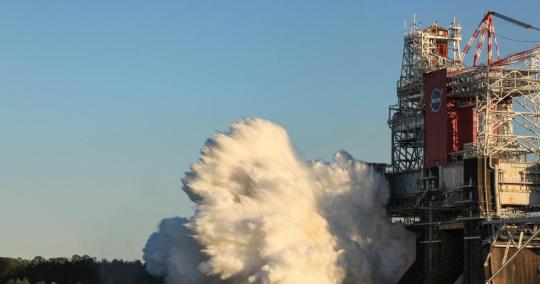
NASA cuts short ground test of its giant moon rocket | Space News #cuts #giant #ground #moon #nasa #news #rocket #short #space #test https://world-update.com/nasa-cuts-short-ground-test-of-its-giant-moon-rocket-space-news/?feed_id=95431&_unique_id=6003afd484ce3
0 notes
Text
NASA Cuts Short Test of Its Giant Rocket to the Moon
Here’s what you need to know:
In a fiery demonstration of power, the four engines of NASA’s next mighty moon rocket fired in synchrony for the first time on Saturday and, by design, went nowhere.
The test started smoothly, with white billowing clouds shooting out of the test stand at NASA’s Stennis Space Center in Mississippi. But then the engines shut down about 1 minute, 15 seconds later — far shorter than the planned eight-minute firing that was to simulate what the engines will do during an actual launch of the Space Launch System.
During the NASA TV broadcast, the agency’s commentators did not explain what went wrong, but N. Wayne Hale Jr., a former manager of NASA’s space shuttle program, suggested on Twitter that it was a significant problem.
Well MCF was not a call this ascent flight director ever wanted to hear: Major Component Failure is detected by the SSME controller.
— Wayne Hale (@waynehale) January 16, 2021
This was a ground test to verify that everything is working as it should. The booster stage stayed securely held down at a test stand.
The same booster is scheduled to head off to space in November in an uncrewed test flight that is to go to the moon and beyond. But the problem encountered during Saturday’s test could add to the delays in the development of this rocket, known as the Space Launch System.
NASA has spent years and billions of dollars developing this rocket, which is frequently abbreviated as S.L.S.. Eventually, it is to take astronauts to moon and perhaps farther out into the solar system someday.
The test fire occurred on Saturday around 5:27 p.m. Eastern time.
Earlier in the afternoon the agency shifted the schedule forward by one hour, to 4 p.m., saying after it had loaded the rocket with propellant that preparation was ahead of schedule.
Currently running up to an hour ahead of schedule for @NASA_SLS hot fire test. NASA TV broadcast will now begin at 3:20pm ET.
— Jim Bridenstine (@JimBridenstine) January 16, 2021
However, the updated time frame was then delayed, and Alex Cagnola, a NASA engineer, said that the test conductors were “working through a few issues on the stand,” without describing the cause of the delay or how long it would last.
Ultimately, the test occurred almost 30 minutesafter the originally scheduled time of 5 p.m. Eastern. A news conference is scheduled to follow about two hours after the test.

A solid rocket booster inside the Kennedy Space Center’s Rotation, Processing and Surge Facility at Cape Canaveral, Fla., this summer.Credit…Ben Smegelsky/NASA
The Space Launch System is the 21st-century equivalent of the Saturn V that took NASA astronauts to the moon in the 1960s and 1970s. Although there are many other rockets available today, they are too small to launch spacecraft that can carry people to the moon. (A possible exception is SpaceX’s Falcon Heavy, but a human lunar mission would require two separate launches carrying pieces that would then dock together in space or head separately to the moon.)
The Falcon Heavy can lift up to 64 metric tons to low-Earth orbit. The initial version of the S.L.S. is a bit more powerful, capable of lifting 70 metric tons, and future versions of the rocket will be able to loft up to 130 metric tons, more than the rockets that carried the Apollo astronauts to the moon.
Although the Space Launch System will be expensive — up to $2 billion a launch for a rocket that can be used only once — Congress has provided steadfast financial support for it so far. Supporters maintain that it is important for the government to own and operate its own powerful deep-space rocket, and pieces of the system are built by companies across the country, spreading the economic benefits to many states and congressional districts.
The Space Launch System is a key component for Artemis, the program to take NASA astronauts back to the moon in the coming years. Although President Trump pledged to make the trip by the end of 2024, few expected that NASA would actually meet that timeline, even before President-elect Joseph R. Biden Jr. was elected.
When NASA announced its plans for the Space Launch System in 2011, the first launch was scheduled for 2017. As is typical for new rocket designs, the development ran into technical difficulties, such as the need to develop procedures for welding together pieces of metal as large as those in the rocket. NASA also paused work on the rocket for a time last year during the early stages of coronavirus outbreak.
As the date of the first launch slipped several times, the price tag rose. NASA has so far spent more than $10 billion on the rocket and more than $16 billion on the Orion capsule where the astronauts will sit.
In an audit in 2018, NASA’s inspector general blamed poor performance by Boeing, the main contractor building the booster stage, for much of the delay. Another report by the inspector general in 2020 said NASA “continues to struggle managing SLS program costs and schedule.”
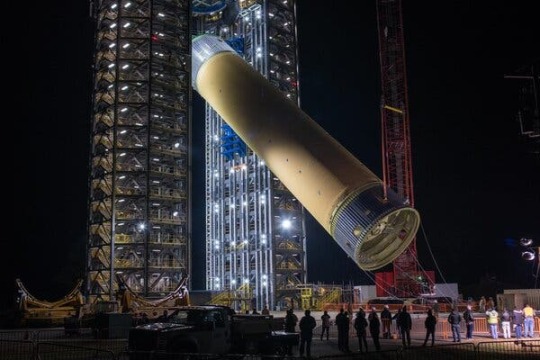
The Space Launch System’s liquid hydrogen tank was loaded onto a test stand at the Marshall Space Flight Center in Huntsville, Ala., in January 2019.Credit…Tyler Martin/NASA
The test fire is part of what NASA calls the green run, a series of tests of the fully assembled booster stage. The same booster that just was just ignited will be used for the first flight to space, so engineers wanted to ensure that it works as designed before launching it.
Several other rockets are under development, and some may be close to their first trips to space.
The United Launch Alliance, a joint venture between Boeing and Lockheed Martin, may launch its Vulcan Centaur in the fourth quarter of the year. The Vulcan Centaur is the successor to Atlas V, a longtime workhorse for launching military and NASA satellites. However, that rocket uses the Russian-built RD-180 engines, and Congress has grown increasingly leery of relying on technology from a country that is often considered an adversary.
Blue Origin, the rocket company started by Jeff Bezos, the billionaire founder of Amazon, has also been developing a reusable rocket called New Glenn that would compete with both Vulcan Centaur and SpaceX’s Falcon 9 rockets. (Blue Origin will also earn money from each Vulcan Centaur launch; that booster uses BE-4 engines made by Blue Origin.)
Most intriguing is the gigantic Starship rocket under development by Elon Musk’s SpaceX. When mounted on top of a huge booster stage, it would dwarf the Space Launch System, yet would be entirely reusable like a passenger jet. It is designed to take people to Mars, and SpaceX has also won a contract to adapt it for taking NASA astronauts to the surface of the moon.
Video

During Wednesday’s test flight of the SpaceX Starship prototype, a rocket Elon Musk envisions ferrying humans to Mars, it launched into the sky but glided back to Earth before it exploded while attempting to land.CreditCredit…By Reuters
Mr. Musk’s engineers have been conducting atmospheric test flights of Starship prototypes at a site in South Texas along the Gulf Coast. During the most recent test, which was livestreamed on the internet, the prototype rocket accomplished a number of technical goals before coming down too fast during its landing and exploding in a spectacular blast. The company appears to be preparing for its next test flight in the days or weeks to come.
A successful hot-fire test would allow the booster stage to be taken to the Kennedy Space Center in Florida. That will set the stage for the Space Launch System’s first journey to orbit and beyond, perhaps later this year.
That will be a mission with no astronauts aboard called Artemis 1. The launch will carry the Orion module, as well as a variety of small CubeSats, on a course to the moon. The capsule will orbit the moon several times, much as in NASA’s Apollo 8 mission, before returning to Earth and splashing down in a water landing.
Success of that mission could set the stage for the first astronaut flight in Orion and eventually result in a moon landing.
Multiple Service Listing for Business Owners | Tools to Grow Your Local Business
www.MultipleServiceListing.com
The post NASA Cuts Short Test of Its Giant Rocket to the Moon appeared first on Multiple Service Listing.
from Multiple Service Listing https://ift.tt/2KmwNR3
0 notes
Link
NASA Cuts Brief Take a look at of Its Large Rocket to the Moon Right here’s what it is advisable to know: In a fiery demonstration of energy, the 4 engines of NASA’s subsequent mighty moon rocket fired in synchrony for the primary time on Saturday and, by design, went nowhere. The take a look at began easily, with white billowing clouds capturing out of the take a look at stand at NASA’s Stennis House Middle in Mississippi. However then the engines shut down about 1 minute, 15 seconds later — far shorter than the deliberate eight-minute firing that was to simulate what the engines will do throughout an precise launch of the House Launch System. In the course of the NASA TV broadcast, the company’s commentators didn’t clarify what went fallacious, however N. Wayne Hale Jr., a former supervisor of NASA’s house shuttle program, prompt on Twitter that it was a major downside. Effectively MCF was not a name this ascent flight director ever wished to listen to: Main Part Failure is detected by the SSME controller. — Wayne Hale (@waynehale) January 16, 2021 This was a floor take a look at to confirm that all the pieces is working because it ought to. The booster stage stayed securely held down at a take a look at stand. The identical booster is scheduled to go off to house in November in an uncrewed take a look at flight that’s to go to the moon and past. However the issue encountered throughout Saturday’s take a look at might add to the delays within the growth of this rocket, referred to as the House Launch System. NASA has spent years and billions of {dollars} growing this rocket, which is continuously abbreviated as S.L.S.. Ultimately, it’s to take astronauts to moon and maybe farther out into the photo voltaic system sometime. The take a look at hearth occurred on Saturday round 5:27 p.m. Japanese time. Earlier within the afternoon the company shifted the schedule ahead by one hour, to 4 p.m., saying after it had loaded the rocket with propellant that preparation was forward of schedule. At the moment operating as much as an hour forward of schedule for @NASA_SLS scorching hearth take a look at. NASA TV broadcast will now start at 3:20pm ET. — Jim Bridenstine (@JimBridenstine) January 16, 2021 Nonetheless, the up to date timeframe was then delayed, and Alex Cagnola, a NASA engineer, mentioned that the take a look at conductors have been “working by means of just a few points on the stand,” with out describing the reason for the delay or how lengthy it could final. Finally, the take a look at occurred nearly 30 minutesafter the initially scheduled time of 5 p.m. Japanese. A information convention is scheduled to observe about two hours after the take a look at. A stable rocket booster contained in the Kennedy House Middle’s Rotation, Processing and Surge Facility at Cape Canaveral, Fla., this summer season.Credit score…Ben Smegelsky/NASA The House Launch System is the Twenty first-century equal of the Saturn V that took NASA astronauts to the moon within the Nineteen Sixties and Nineteen Seventies. Though there are various different rockets obtainable as we speak, they’re too small to launch spacecraft that may carry folks to the moon. (A doable exception is SpaceX’s Falcon Heavy, however a human lunar mission would require two separate launches carrying items that might then dock collectively in house or head individually to the moon.) The Falcon Heavy can raise as much as 64 metric tons to low-Earth orbit. The preliminary model of the S.L.S. is a little more highly effective, able to lifting 70 metric tons, and future variations of the rocket will be capable of loft as much as 130 metric tons, greater than the rockets that carried the Apollo astronauts to the moon. Though the House Launch System shall be costly — as much as $2 billion a launch for a rocket that can be utilized solely as soon as — Congress has supplied steadfast monetary assist for it up to now. Supporters keep that it will be significant for the federal government to personal and function its personal highly effective deep-space rocket, and items of the system are constructed by firms throughout the nation, spreading the financial advantages to many states and congressional districts. The House Launch System is a key element for Artemis, this system to take NASA astronauts again to the moon within the coming years. Though President Trump pledged to make the journey by the top of 2024, few anticipated that NASA would really meet that timeline, even earlier than President-elect Joseph R. Biden Jr. was elected. When NASA introduced its plans for the House Launch System in 2011, the primary launch was scheduled for 2017. As is typical for brand new rocket designs, the event bumped into technical difficulties, comparable to the necessity to develop procedures for welding collectively items of steel as giant as these within the rocket. NASA additionally paused work on the rocket for a time final yr in the course of the early levels of coronavirus outbreak. Because the date of the primary launch slipped a number of occasions, the value tag rose. NASA has up to now spent greater than $10 billion on the rocket and greater than $16 billion on the Orion capsule the place the astronauts will sit. In an audit in 2018, NASA’s inspector common blamed poor efficiency by Boeing, the primary contractor constructing the booster stage, for a lot of the delay. One other report by the inspector common in 2020 mentioned NASA “continues to battle managing SLS program prices and schedule.” The House Launch System’s liquid hydrogen tank was loaded onto a take a look at stand on the Marshall House Flight Middle in Huntsville, Ala., in January 2019.Credit score…Tyler Martin/NASA The take a look at hearth is a part of what NASA calls the inexperienced run, a collection of exams of the absolutely assembled booster stage. The identical booster that simply was simply ignited shall be used for the primary flight to house, so engineers wished to make sure that it really works as designed earlier than launching it. A number of different rockets are beneath growth, and a few could also be near their first journeys to house. The United Launch Alliance, a three way partnership between Boeing and Lockheed Martin, might launch its Vulcan Centaur within the fourth quarter of the yr. The Vulcan Centaur is the successor to Atlas V, a longtime workhorse for launching navy and NASA satellites. Nonetheless, that rocket makes use of the Russian-built RD-180 engines, and Congress has grown more and more leery of counting on expertise from a rustic that’s usually thought-about an adversary. Blue Origin, the rocket firm began by Jeff Bezos, the billionaire founding father of Amazon, has additionally been growing a reusable rocket referred to as New Glenn that might compete with each Vulcan Centaur and SpaceX’s Falcon 9 rockets. (Blue Origin may even earn cash from every Vulcan Centaur launch; that booster makes use of BE-4 engines made by Blue Origin.) Most intriguing is the big Starship rocket beneath growth by Elon Musk’s SpaceX. When mounted on high of an enormous booster stage, it could dwarf the House Launch System, but could be fully reusable like a passenger jet. It’s designed to take folks to Mars, and SpaceX has additionally received a contract to adapt it for taking NASA astronauts to the floor of the moon. Video Throughout Wednesday’s take a look at flight of the SpaceX Starship prototype, a rocket Elon Musk envisions ferrying people to Mars, it launched into the sky however glided again to Earth earlier than it exploded whereas trying to land.Credit scoreCredit score…By Reuters Mr. Musk’s engineers have been conducting atmospheric take a look at flights of Starship prototypes at a web site in South Texas alongside the Gulf Coast. Throughout the latest take a look at, which was livestreamed on the web, the prototype rocket achieved plenty of technical targets earlier than coming down too quick throughout its touchdown and exploding in a spectacular blast. The corporate seems to be making ready for its subsequent take a look at flight within the days or even weeks to return. A profitable hot-fire take a look at would enable the booster stage to be taken to the Kennedy House Middle in Florida. That may set the stage for the House Launch System’s first journey to orbit and past, maybe later this yr. That shall be a mission with no astronauts aboard referred to as Artemis 1. The launch will carry the Orion module, in addition to a wide range of small CubeSats, on a course to the moon. The capsule will orbit the moon a number of occasions, a lot as in NASA’s Apollo 8 mission, earlier than returning to Earth and splashing down in a water touchdown. Success of that mission might set the stage for the primary astronaut flight in Orion and ultimately end in a moon touchdown. Supply hyperlink #cuts #giant #Moon #NASA #rocket #Short #Test
0 notes
Text
NASA Cuts Short Test of Its Giant Rocket to the Moon
NASA Cuts Short Test of Its Giant Rocket to the Moon
Here’s what you need to know:
In a furious display of power, four engines from NASA’s next powerful moon rocket fired into synchronization for the first time on Saturday and, by design, went nowhere.
Testing began smoothly, with white badge clouds shooting out of the test stand at NASA’s Stennis Space Center in Mississippi. But then the engines took off after about 1 minute, 15 seconds – much…
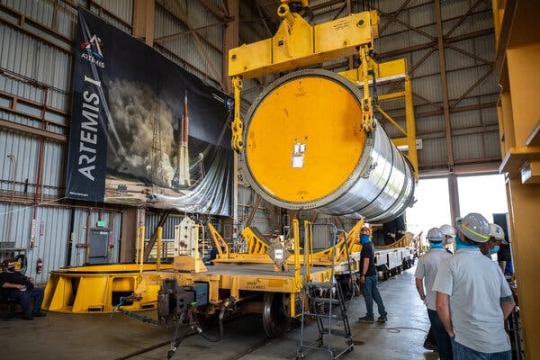
View On WordPress
0 notes
Video
youtube
This Hopping Robot Could Explore the Solar System's Icy Moons SPARROW, a steam-powered robotic concept, could one day take giant leaps over some of the most hazardous terrains known (and unknown) in the solar system. Steam locomotion may sound like an antiquated way to get around, but it might be getting a science fiction makeover as we expand our reach into the solar system. A novel robotic concept being investigated at NASA's Jet Propulsion Laboratory in Southern California would use steam propulsion to hop across the sort of icy terrains found on Jupiter's moon Europa and Saturn's moon Enceladus. Both are thought to host vast subsurface oceans of salty water under a thick ice crust. But while that makes them fascinating destinations for scientific study, the little we know about their surfaces could also make navigating them especially challenging. That's where the Steam Propelled Autonomous Retrieval Robot for Ocean Worlds, or SPARROW, comes in. About the size of a soccer ball, the robot consists of a system of thrusters, avionics and instruments encased in a protective spherical cage. To keep the environment pristine for study, SPARROW would run not on rocket fuel but on steam produced from melted ice, traveling primarily through the air via short thrusts. In the sort of low-gravity environment found on those distant icy moons, there'd be no atmospheric drag to slow it down, enabling hops of many miles over landscapes that other robots would have difficulty navigating. The terrain on Europa is likely highly complex," said Gareth Meirion-Griffith, JPL roboticist and the lead researcher of the concept. "It could be porous, it might be riddled with crevasses, there might be meters-high penitentes" - long blades of ice known to form at high latitudes on Earth - "that would stop most robots in their tracks. But SPARROW has total terrain agnosticism; it has complete freedom to travel across an otherwise inhospitable terrain." The concept depends on a lander serving as the home base for SPARROW. It would mine the ice and melt it down before loading the water onto the hopping robot. SPARROW would then heat the water inside its engines, creating bursts of steam to give a boost off the surface. When low on fuel, the hopping bot would return to the lander for more, also dropping off any scientific samples for further analysis. To maximize the science investigations that could be done, many SPARROWs could be sent together, swarming around a specific location or splitting up to explore as much alien terrain as possible. In 2018, SPARROW was awarded Phase I funding by the NASA Innovative Advanced Concepts (NIAC) program, which nurtures visionary ideas that could, someday, be used in future space missions. Phase I studies explore the overall viability and advance the Technology Readiness Level (TRL). Eligible recipients of Phase I awards can propose a follow-on Phase II study. For SPARROW, the NIAC Phase I funding allowed the development and testing of different water-based propellant systems that could be used to produce steam in the most efficient way. Additionally, the SPARROW team was able to better understand how the spherical robot might tumble when landing on chaotic icy terrain by using computer simulations, thereby identifying the most efficient angle of launch and speed of hop. "From this, and related propulsion calculations, we were able to determine that a single long hop would be more efficient that several smaller hops," added Meirion-Griffith. NIAC is funded by NASA's Space Technology Mission Directorate, which is responsible for developing the new cross-cutting technologies and capabilities needed by the agency.
0 notes